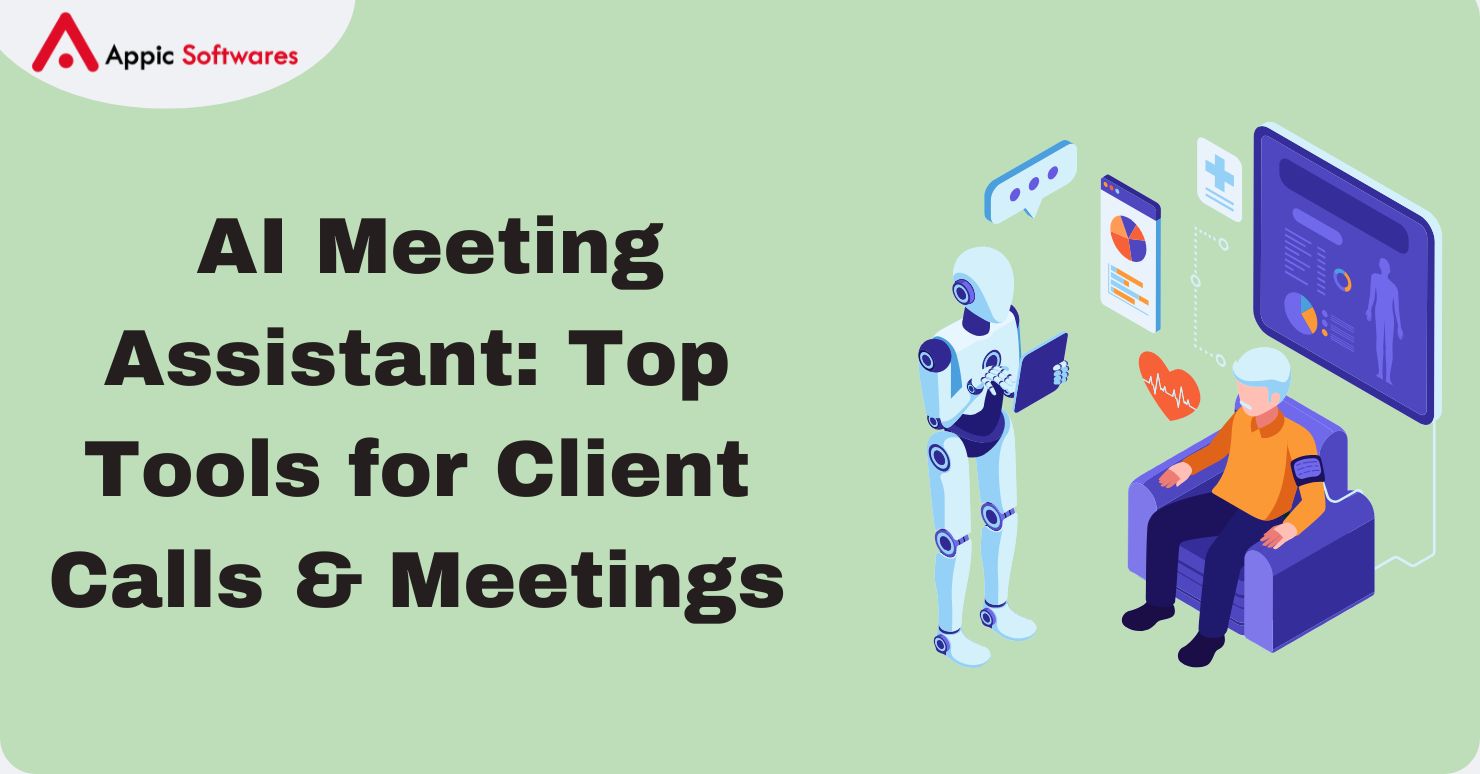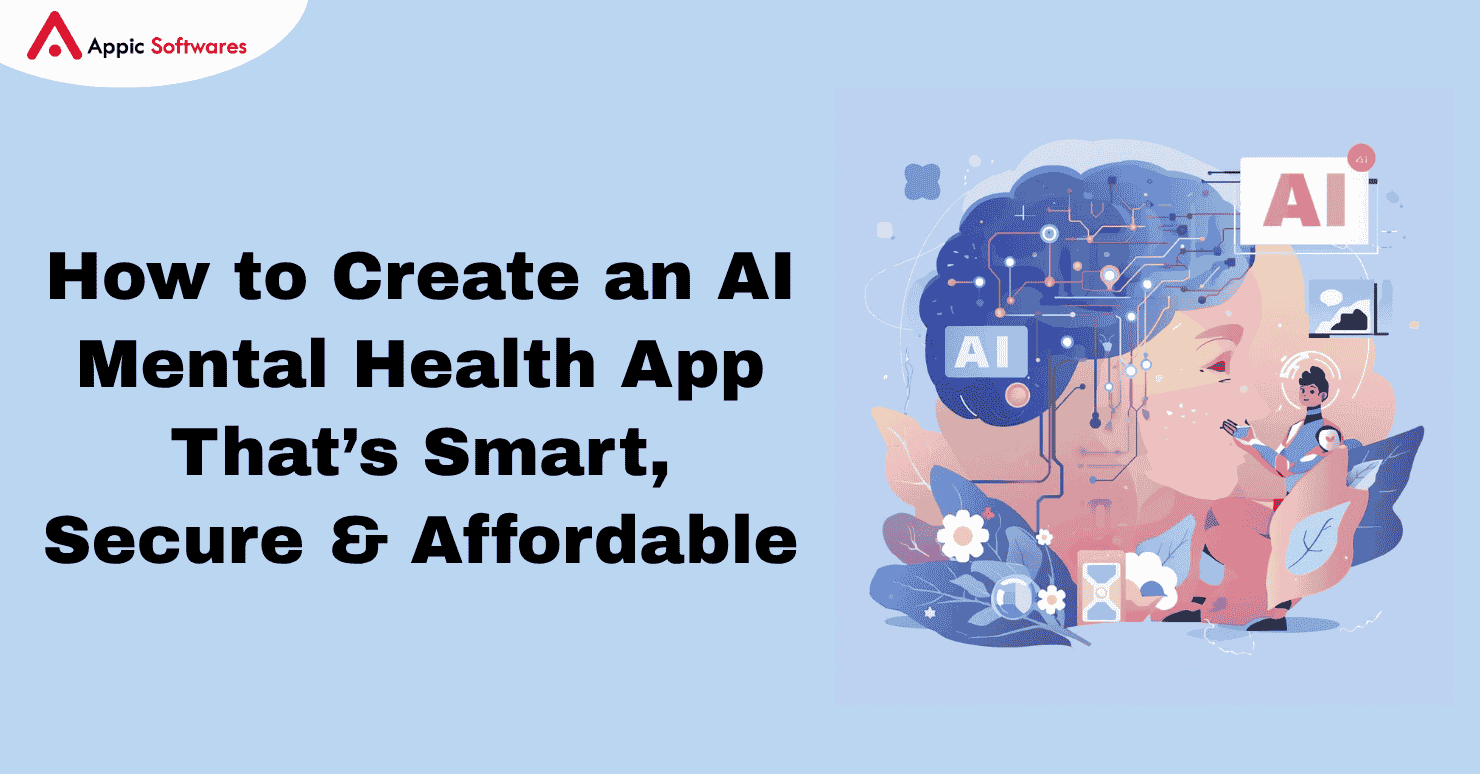
Today, mobile applications are prevalent, especially in the USA, and continue to become smarter, safer, and more interesting in the years to come. As a result, when designing apps for 2025, new technologies and users’ preferences enter into the picture. Whether you are an entrepreneur who aims to develop an app for a new enterprise you are starting, or a developer who plans for the company’s app in 2025, it is crucial to acquaint yourself with current trends in development in the USA. In this guide, you will find out the main trends, why they are important, and some key examples to make it easier for you to know what to expect next.
AI-Powered Mobile Apps Will Dominate
App technologies enhance the AI aspect, making apps smarter as compared to previous ones. In 2025, AI-powered mobile apps are set to take over, offering features that feel personal and helpful. Such an application will seem natural if it suggests something personal and helpful. The use of AI App Development services can help the firm to apply the intelligent features to their mobile applications to deliver business-critical recommendation engines and predictive analytics that will help captivate the users.
What is AI in Mobile Apps?
AI makes the app to possess the ability to think or act like human beings. It uses data to gain knowledge on what the users prefer and on how such apps should be optimized. For instance, it may recommend songs on Spotify, identify faces on photos, or guess what might be the preference of a particular person in terms of purchasing.
Why AI Matters in 2025
AI makes apps more useful by tailoring them to each user. It saves time and makes apps feel like they know you. Businesses love AI because it keeps users coming back and boosts sales. Plus, AI can handle tasks like customer support, making apps more efficient.
How It’s Used
Think of Netflix recommending a show you love or Amazon suggesting products based on your shopping history. In 2025, AI will go further, helping apps like fitness trackers adjust workouts based on your sleep or stress levels. Banks are using AI to spot fraud, and retail apps use it to create shopping experiences that feel made just for you.
Rise of Cross-Platform App Development
Building apps that work on both iPhones and Androids is getting easier, thanks to cross-platform app development. This approach is a key part of app development trends in the USA 2025, allowing businesses to maximize reach efficiently. Cross-platform app development in the USA is gaining traction as companies look to launch apps quickly with minimal resources.
What is Cross-Platform Development?
Cross-platform development means creating one app that runs on multiple systems, like iOS and Android, using a single set of code. Tools like Flutter and React Native make this possible.
Why It’s Popular
Saves Money: Instead of building two apps, you build one, cutting costs.
Faster Updates: Changes can go out to all users at once, no matter their device.
Same Look and Feel: Users get a consistent experience on any phone.
In 2025, cross-platform apps will get even better, with tools offering performance close to apps built just for one system. Businesses are choosing this approach to reach more people quickly. Plus, new features like AI are being added to these apps, making them more powerful.
Focus on Privacy & App Security
With more people worried about their data, app security is a top priority in 2025. Security is a critical aspect of app development trends in the USA 2025, as users demand assurance that their information is protected.
Why Security Matters
Apps store personal details like names, addresses, and even bank info. If hackers get in, it can hurt users and ruin a company’s reputation. Strong security builds trust and keeps users happy.
Security Trends for 2025
AI for Safety: AI spots threats fast, stopping hackers before they cause trouble.
Zero Trust: This approach checks every user and device, making sure only the right people get access.
Super-Strong Encryption: New encryption methods protect data even from future tech like quantum computers.
Following the Rules
Apps in the USA must follow laws like the California Consumer Privacy Act (CCPA) and the General Data Protection Regulation (GDPR) for users in Europe. These rules make sure apps handle data carefully.
Integration with Wearables & IoT
Wearables like smartwatches and IoT devices like smart thermostats are becoming part of everyday life. Mobile apps are the key to controlling them, and this integration is a growing part of app development trends in the USA by 2025. To successfully implement such integrations, businesses often seek custom app consultation to tailor solutions that meet their specific needs and ensure seamless connectivity.
What is Wearable and IoT Integration?
Wearables track things like your steps or heart rate, while IoT devices connect everyday objects to the internet, like lights or fridges. Mobile apps let you see and control this data.
Why It’s Growing
People love the convenience of checking their fitness stats or turning off lights from their phone. Businesses see this as a way to make apps more useful and keep users engaged.
Examples
Fitness Apps: Apps like Fitbit show your daily activity and suggest ways to stay healthy.
Smart Home Apps: Control your thermostat or security cameras with apps like Google Home.
Healthcare: Doctors use apps to monitor patients’ health through wearables, catching problems early.
In 2025, apps will get better at using data from these devices to offer personalized tips. For example, a fitness app might suggest a lighter workout if you didn’t sleep well.
Voice Search & Conversational Interfaces
Talking to your phone is becoming normal, and in 2025, voice search and chatbots will be a big part of mobile apps. Voice technology is one of the emerging mobile app trends in the USA 2025, making apps more accessible and convenient.
What are Voice Search and Conversational Interfaces?
Voice search lets you use your voice to find things, like asking Siri for directions. Conversational interfaces, like chatbots, let you talk to apps as if they’re people.
Why They’re Important
Voice features make apps easier to use, especially when you’re busy or can’t type. They also help people with disabilities use apps more comfortably.
Benefits
Hands-Free: Great for driving or cooking.
Fast: Speaking is quicker than typing.
Friendly: Chatbots make apps feel more human.
AI is making voice search super accurate, understanding accents and casual speech. Apps will use voice for everything, from ordering food to controlling smart homes. Developers need to make sure their apps work well with voice commands to stay relevant in app development trends in the USA 2025.
Demand for Super Apps in the U.S. Market
Super apps, which do many things in one place, are huge in Asia. In the USA, they’re starting to get attention as part of app development trends in the USA 2025. While super apps are still emerging, they represent a possible direction for the future of app development, consolidating multiple services into a single platform.
What is a Super App?
A super app is like a Swiss Army knife for your phone. It might let you chat, shop, pay bills, and book rides, all in one app. WeChat in China is a famous example.
Why the Interest?
Super apps save space on your phone and make life simpler by putting everything in one place. Big tech companies in the USA, like PayPal, are trying to build their own versions.
Challenges in the USA
Some experts think super apps might not work in the USA because:
People here like using separate apps for different tasks.
Strict privacy laws make it hard to share data between services.
There’s no single app dominating the market like WeChat does in China.
In 2025, we might see “super-ish” apps, where companies like Uber add more services, like food delivery or payments. But a true super app might take longer to appear.
Low-Code/No-Code App Solutions
You don’t need to be a coding expert to make apps anymore, thanks to low-code and no-code platforms, a trend shaping app development trends in the USA 2025. Mobile App Development Services provided by companies like Appic Softwares help businesses create custom app solutions for businesses quickly and efficiently, making app development accessible to all.
What are Low-Code/No-Code Platforms?
These tools let you build apps using simple drag-and-drop interfaces, like building with Lego blocks. Low-code needs a bit of coding, while no-code is all visual.
Why They’re Great
Fast: Build apps in days, not months.
Cheap: No need to hire a big team of developers.
For Everyone: Even non-tech people can make apps.
Gartner says 70% of new apps will use these platforms by 2025. They’re adding cool features like AI and mobile app support, making them even more powerful.
Mobile App Development Services provided by Appic Softwares help businesses create custom apps quickly. Small businesses use them to make apps for things like event planning or customer tracking.
Advanced UX with Motion Design
Good design makes apps fun to use, and motion design is a big part of that in 2025. Designing for mobile user experience 2025 means incorporating intuitive animations and interactions that enhance usability, a notable focus in app development trends in the USA 2025.
What is Motion Design?
Motion design uses animations to make apps feel alive. Think of a button that bounces when you tap it or a smooth slide when you switch screens.
Why It Matters
Animations guide users, show them what’s happening, and make apps feel polished. They can make a good app great by keeping users engaged.
In 2025, apps will use creative animations, like 3D menus or scrolling effects, to stand out. But developers need to keep it simple so users don’t get confused.
Sustainability in App Development
Apps can help the planet, and in 2025, developers are focusing on making them eco-friendly. Sustainability is becoming an important consideration in app development trends, as part of broader app development trends in the USA 2025, aligning technology with environmental responsibility.
What is Sustainable App Development?
This means building apps that use less energy, run on green servers, or encourage users to live sustainably.
Why It’s Important
Apps use a lot of power, especially in data centers. By making them more efficient, developers can cut down on carbon emissions. Plus, users like apps that care about the environment.
Practices
Efficient Code: Writing code that uses less battery and data.
Green Hosting: Using servers powered by wind or solar energy.
Eco Apps: Apps that track your carbon footprint or help you recycle.
Conclusion
The app development trends in the USA 2025 are all about making apps smarter, safer, and more user-friendly. AI is leading the way, while cross-platform tools and low-code platforms make building apps easier. Security, wearables, voice features, and sustainability are also big focuses. By keeping up with these trends, businesses and developers can create apps that users love and that make a positive impact.
Ready to Build a Future-Proof App in 2025? Want to create an app that uses the latest trends? Our team can help you build something amazing. Contact us for a free quote and let’s get started!
FAQs
1. How will AI shape the future of mobile app development in 2025?
AI is improving mobile apps by making them smarter and more user-friendly. In 2025, it will drive personalization with tailored recommendations and predictive features that fulfill user needs. AI will also automate tasks like customer support through chatbots and enhance functionality with tools like voice recognition and image processing. This means better user engagement and more efficient apps, making AI a key player in app innovation.
2. What are the advantages of cross-platform app development for businesses in 2025?
Cross-platform development lets businesses create one app for both iOS and Android, cutting costs and development time. In 2025, tools like Flutter and React Native will deliver near-native performance, helping companies reach more users with a single codebase. It’s ideal for startups, offering faster launches, easier updates, and a consistent experience across platforms.








